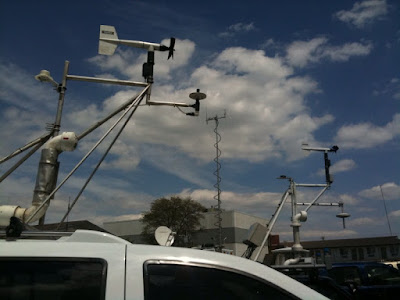With the arrival of an early Spring and unusual early season tornado outbreaks heralding a potentially VERY ACTIVE storm season again this year, we are left with memories of the deaths and devastation from last year and reminders of the need to stay vigilant and prepared! This is especially true of course for those living in the classic tornado-prone areas of the Great Plains and on east through the Ark-La-Tex and Ozark Regions all the way to the East Coast. Of course storms know no boundaries, and the best thing that any of us can–and MUST–do is have a solid, well-informed plan or two in place! For help with establishing a safety plan, please refer to this link: http://www.spc.noaa.gov/faq/tornado/#Safety
Also, I re-post here some important words of wisdom from another friend & respected meteorologist, Jon Davies:
“The reality is, even with radars that have faster scans and better technology, the National Weather Service (and Accuweather) cannot in real-time discriminate between tornadoes and other severe phenomena in many situations. Some tornadoes are just too brief. The public needs to understand this and not expect someone to come “knocking on their door” to personally warn them for every potentially severe event.” … “People should be prepared and responsible for their own safety by taking all warnings and watches seriously. They can then monitor cell phone alerts, radar, television, and/or weather radios for additional information to assess their risk rather than expecting sirens to warn them specifically for _everything_. If a strong supercell on radar with a severe thunderstorm warning is approaching and your town is directly in its path, you should be prepared to take cover _fast_, regardless of whether or not a tornado warning is in effect or the sirens are blaring.” (davieswx.blogspot.com)
I couldn’t agree more!! Far too often people are generally complacent (or even cavalier) about the dangers involved with severe storms. I firmly believe that those who live in the aforementioned areas should not only have weather radios with built in auto-alert signals (most modern ones do) and tune in to local media and/or The Weather Channel (the latter especially for larger events/outbreaks) but also have a BASIC understanding of where they (and their loved ones) are relative to any incoming severe storms. This is referred to as “situational awareness” and, when combined with a solid safety plan, WILL save your life.
Don’t take a chance this season, please take it upon yourself to get things in order and set up to receive severe alerts through your cell phones (I strongly recommend The Weather Channel’s mobile alerts which you can sign up for here: http://www.weather.com/services/mobilesplash.html)












Recent Comments